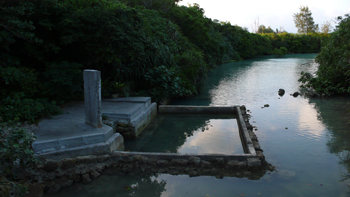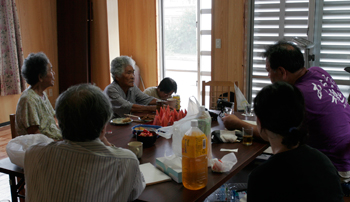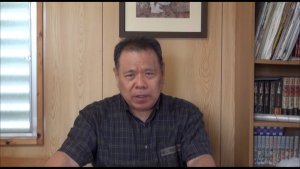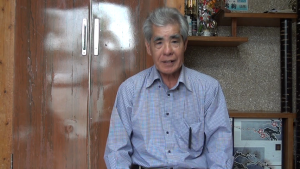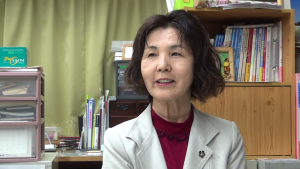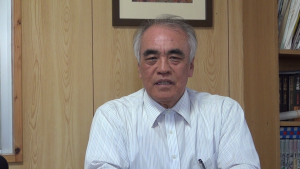The Digital Museum introduces through video and sound the language and culture of Miyakojima City, Okinawa Prefecture, and in particular that of the Nishihara district. It has been constructed so that the residents of Nishihara, those who are originally from the area but presently living elsewhere, and those who are interested in or studying Ryukyuan language and culture may learn about the language, life, and traditions of Nishihara.
It is no exaggeration to say that the languages and culture of the Ryukyus are now in danger of becoming extinct. Currently, almost all fluent native speakers of Ryukyuan are of advanced age and also speak standard Japanese. Due to the increasing use of standard Japanese in daily life, the transmission of their native tongue to younger generations has become more and more difficult. Up until recently, the Ryukyus were able to preserve their original customs and culture, amid which their inhabitants lead rich lives. Opportunities to freely use the dialect, however, have become exceedingly scarce as a result of standardized school curriculums and the recent expansion of the mass media. Former educational and cultural policies banning and punishing the use of local dialects, as exemplified by the practice of punishing students by making them wear a ‘‘dialect card’’, have been major contributing factors. Consequently, Ryukyan culture and language are on the verge of disappearing.
The Nishihara district of Miyakojima, where Ikema—a dialect quite peculiar even on Miyakojima—is spoken, is home to a community that migrated from neighboring Ikema Island about 140 years ago. The need for confirmation of self-identity being strengthened by the fact that they were migrants from a different area, members of this communtiy have made a continuous effort to preserve and pass on their unique language and culture. The area is unusual within the Ryukyus in that even some residents in their fifties can speak the dialect fluently. Furthermore, the Nanamui, a group in charge of religious rituals in the village, was created in which mainly women have endeavored to pass on ceremonies handed down from long ago to the present. However, even in this area the native language is being lost due to the standardized education system and migration to and from different areas, while the demands of modern life make it difficult to maintain the traditional ceremonies.
Since January of 2006 we have been conducting linguistic fieldwork in the area, experiencing first-hand the wonder of its language and culture, as well as the charm of the local residents. In Nishihara, a senior citizen group is continuously making a proactive effort through its activities to pass on their language and culture to the younger generations. Activities in its regular monthly meetings include, for instance, studying the relation between certain elements of the Ikema dialect, preserved through the ages, with those of the language of the Kojiki and the Nihonshoki, the two oldest Japanese chronicles, and the Manyoshu, the oldest collection of Japanese poetry, as well as practicing traditional dance and song. In 2007, on the occasion of the 45th anniversary of this group, a musical play bringing to life the memories of the migration 140 years ago from Ikema Island to Miyakojima was staged, and this was recorded on DVD. The script and direction being completely in the hands of Nishihara residents, and the cast numbering close to a hundred, the play was performed entirely in the Ikema dialect (Muradate). In addition, a nursery school in the area has created opportunities for the children to come into contact with the elderly women of Nishihara in an effort to pass on the traditional language and culture. Among the fruits of these efforts are the composition of original children’s stories written in the language of Nishihara (which is called NsImura nu munui), a collection of educational proverbs, and a collection of songs with transcriptions of their melodies.
As the role of a dialect is that of a language for everyday life in the region in which it is spoken, words and expressions necessary for modern life but remote from life in the region are usually borrowed from the standard language. The Ikema dialect that is spoken in Nishihara is a dialect of Miyako, one of the Southern Ryukyuan languages, and it differs considerably not only from standard Japanese, but also from the language of Okinawa Island. In fact, these differences are so extensive that it can justifiably be called a different language. Nevertheless, with the modernization of everyday life comes bilingualism with the standard language, leading to a decline in the use of the local NsImura FucI, until it is eventually completely replaced by the standard language. This means that the rich world that has been transmitted to us using NsImura FucI will be lost as well. Although we cannot prevent this, we can document the rich language and culture of Nishihara and preserve it in the form of, for example, video and sound. This Digital Museum provides a place for the documentation of activities, songs, and dance of the people of the Nishihara area. It is constructed in such a way that the younger generations can also learn about and enjoy the language and culture of Nishihara.
